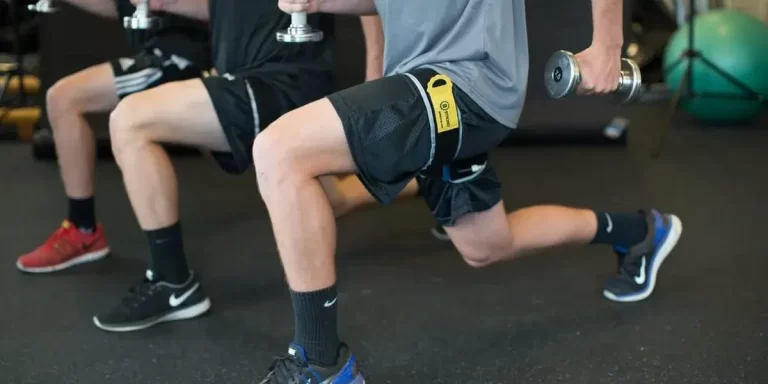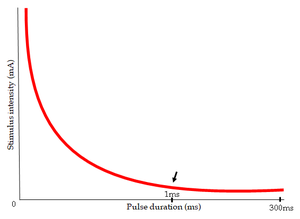Physical Therapist
Introduction
Licensed physical therapists are healthcare professionals who assist various patient groups affected by illness, injury, and movement disorders. They enhance individuals’ quality of life by preserving, restoring, and advancing their ability to move, function, and engage in more active lifestyles.
The outlook for a profession in physical therapy progresses brightly: the U.S. The Bureau of Labor Statistics projects that employment of physical therapists will grow “much quicker than what is usual for all occupations” between 2022 and 2032.
A physical therapist (PT) is a medical specialist who evaluates and treats conditions:
- Musculoskeletal system (bones and muscles)
- Neurological system (brain)
- Cardiopulmonary system (heart and lungs)
- Integumentary system (skin)
Physical therapists provide support to individuals across all ages and various life stages. Some individuals seek the guidance of a physical therapist to improve their health and to learn how to prevent potential problems in the future.
To thrive in this profession, strong communication and problem-solving skills are essential. Physical therapists operate in a range of settings, including:
- Hospitals
- Long-term care facilities
- Athletics facilities
- Schools
- Clinics
What Physical Therapists Do
Physical therapists assess, diagnose, and treat individuals across all age groups, from infants to those in their later stages of life. They assist patients dealing with injuries, disabilities, or other health issues that require care. Their goals include preventing the need for surgery and medications, enhancing mobility, managing pain and chronic ailments, preventing future complications, and promoting physical function and fitness.
Physical therapists assess every patient and develop a treatment strategy focused on enhancing mobility, reducing or managing pain, restoring function, and preventing disability. Physical therapists will keep an eye on the patient’s development during treatment and modify the plan as necessary. When deemed suitable, the physical therapist will either discharge the patient or transition them to the subsequent phase of their treatment.
Physical therapists can significantly influence individuals’ lives. They support people in achieving fitness objectives, regaining or maintaining independence, and leading active lifestyles. Movement is essential to life, and physical therapists play a crucial role in facilitating it.
Generally, physical therapists obtain referrals from doctors and other medical practitioners. They usually initiate the process by conducting a physical examination to better understand the patient’s issue. Following this, they may employ a combination of the following techniques as part of the treatment plan:
- Exercising
- Stretching
- Utilizing various equipment
- Other hands-on methods
The aim is to restore functionality by enhancing movement and increasing the range of motion in targeted areas of the body.
Ongoing physical therapy can diminish the current or future necessity for prescription medications or surgical interventions—or even further physical therapy.
Daily responsibilities of physical therapists encompass:
- Diagnosing your condition and functional abilities by observing your standing, walking, and completing tasks
- Listening to your concerns
- Formulating a personalized care plan tailored to their assessments of your condition, your goals, and anticipated outcomes
- Utilizing therapeutic devices, such as electrical stimulation machines or kinesiology tape
- Documenting your advancement
- Assisting you with the use of assistive devices such as crutches or canes
- Developing and implementing discharge plans when appropriate
Physical therapists can have a variety of specializations, including:
- Oncology (cancer)
- Cardiovascular (heart) and pulmonology (lungs)
- Geriatrics (elderly care)
- Orthopedics (bone, joint, and spinal concerns)
- Neurology (brain health)
- Sports
- Clinical electrophysiology
- Pediatrics (child health)
Most job functions of physical therapists are performed while standing. They use their bodies to lift, move, and assist patients in modifying their movements. The ability to establish personal connections and motivate individuals are essential skills for physical therapists to facilitate progress.
Where Physical Therapists Work
Physical therapists work in diverse environments, which can include, but are not limited to, hospitals, outpatient facilities, private homes, schools, sports and fitness centers, workplaces, and nursing facilities.
How Much Physical Therapists Earn
Earnings can differ based on factors such as job role, level of experience, educational qualifications, geographic area, and the setting in which they practice.
Although there are regional and specialty-specific variations in the need for physical therapists, the country’s unemployment rates for PTs are usually low. Physical therapy services are expected to continue to be in high demand as the US population ages.
What does DPT mean?
DPT refers to Doctor of Physical Therapy, which is the qualification physical therapists obtain to confirm they are trained and certified.
Earning a DPT typically requires around three years. In addition, physical therapists must have completed an undergraduate bachelor’s degree.
In the United States, all physical therapists are required to pass the National Physical Therapy Examination before they can begin practicing.
Physical Therapist Education and Licensure
In addition to completing a state licensing exam, a doctor of physical therapy degree from a physical therapy education school approved by the Commission on Physical Therapy Education Accreditation is necessary to practice physical therapy in the United States.
Usually, professional DPT programs span three years. The curriculum generally covers numerous key areas, which may include biology, anatomy, cellular histology, physiology, exercise physiology, biomechanics, kinesiology, neuroscience, pharmacology, pathology, behavioral sciences, communication, ethics and values, management musculoskeletal systems, endocrine and metabolic processes, clinical reasoning, evidence-based practice, sociology, finance, the sciences, and cardiovascular and pulmonary healthcare.
About 77% of DPT coursework involves classroom (didactic) instruction and lab work, while the rest, around 23%, is allocated to clinical education. Physical therapy students often work on their final clinical experience for 22 weeks.
If you are a PT or PTA with education from another country, please seek additional information pertinent to internationally educated PTs and PTAs.
Education and Training
Individuals seeking a profession in physical therapy in the United States must first get a Doctor of Physical Therapy (DPT) degree from a recognized institution and then pass a state licensure test.
Typically, DPT programs last around three years to finish. Enrollees in DPT programs typically gain knowledge in subjects such as:
- Biology
- Anatomy
- Cellular histology
- Physiology
- Exercise physiology
- Biomechanics
- Kinesiology
- Neuroscience
- Pathology
- Pharmacology
- Behavioral sciences
- Management sciences
- Communication
- Sociology
- Finance
- Clinical reasoning
- Ethics and values
- Evidence-based practice
- Endocrine and metabolic systems
- Musculoskeletal system
Many DPT programs require students to possess a bachelor’s degree before admission, while some offer a 3 + 3 program format. Students have the opportunity to complete three years of undergraduate coursework in physical therapy prior to starting the three-year professional DPT program.
Another possibility is to seek out a DPT program that gives high school graduates direct entry into a guaranteed admissions pathway that allows them to transition into a professional DPT program seamlessly after fulfilling undergraduate requirements.
Approximately 80% of most DPT programs’ coursework consists of classroom instruction and lab work, while the remainder, about 20%, includes clinical education. Normally, physical therapy students dedicate approximately 27 weeks to finish their ultimate clinical practice.
Licensed physical therapists have the option to further develop their expertise and skills by enrolling in a clinical residency or fellowship program. Residencies offer the chance to gain experience within a specific practice area, while clinical fellowships are structured for therapists demonstrating clinical expertise in particular practice areas.
The American Board of Physical Therapy Specialties allows physical therapists to attain board certification as clinical specialists, although certification in a particular practice field is not mandatory.
Getting Into a DPT Program
Most DPT programs necessitate applicants to hold a bachelor’s degree before admission, while other programs present a 3 + 3 curricular configuration requiring three years of preprofessional (undergraduate/pre-PT) courses before students can transition into a three-year DPT program.
A few programs provide a freshman entry option, allowing direct recruitment from high school into a guaranteed admission pathway. Students accepted into these programs can automatically progress to the professional phase of the DPT program contingent upon completing certain undergraduate courses and meeting other specified criteria, such as maintaining a minimum GPA.
The PTCAS Directory provides a list of DPT programs that are part of the Physical Therapist Centralized Application Service, along with the specific requirements for each program.
Choosing the Right Program
The APTA does not provide rankings of DPT education programs. Programs are accredited by CAPTE, which ensures quality in the educational experience. Cost and Financial Aid Opportunities: The majority of DPT graduates end up with student loans. It’s essential to be informed and ready financially.
Different programs offer unique student experiences and have varying costs. The APTA gladly provides scholarships and awards to qualified DPT students, as well as access to the APTA Money Smart website to assist ambitious students in their financial preparation for the future.
Program Length
Generally, a traditional DPT program spans about two and a half years, but some institutions consolidate academic requirements into a shorter timeframe, potentially reducing the overall cost of your educational journey and allowing you to enter the workforce sooner.
Demographics and Setting
Embarking on a Doctor of Physical Therapy education entails a substantial commitment of time and resources. Selecting a program that provides a sense of ease and support is crucial.
Consider reaching out to current students or recent alumni of the program, or speaking with employers of new graduates, to learn about the program’s strengths and weaknesses. You may also utilize the PTCAS Program Directory to access the direct contact information for DPT programs.
Reasons to See a Physical Therapist: Your physician may refer you to a physical therapist if you have an illness or injury that hinders your physical abilities. They may also recommend a physical therapist if you’re recovering from surgery or dealing with conditions such as:
- Herniated discs
- Anterior cruciate ligament (ACL) reconstruction
- Rotator cuff repair
- Sports-related injuries
- Other orthopedic concerns
The duration of physical therapy varies based on your condition and objectives. A physical therapist will usually collaborate with your referring doctor to agree on a suggested treatment plan. You may need to get clearance from a physical therapist before returning to specific activities.
Could you please explain the variances between a physical therapist and an occupational therapist?
Both physical therapists and occupational therapists are healthcare professionals who assist you in moving your body. The main difference between the two lies in the kind of therapy that each one offers.
Physical therapists generally focus on specific areas of your body, while occupational therapists help you tackle mental and social challenges, in addition to working on physical strength and healing. You might engage with both a physical therapist and an occupational therapist simultaneously to address different symptoms or support your recovery.
What Are the Qualities of a Good Physical Therapist?
The definition of a good physical therapist varies for everyone, as personal preferences differ. However, it’s typically important to work with someone who offers support and makes you feel secure. Since physical therapy can be challenging, finding a therapist you feel at ease with is crucial. It’s important for you to feel at ease when posing questions to your therapist.
Summary
A physical therapist can play a vital role in your healthcare team, aiding in the enhancement of your body’s movement capabilities and comfort.
You may need to see a physical therapist briefly while recuperating from an injury, or as part of your rehabilitation following surgery. Others may work with physical therapists to manage chronic conditions that impact their movement and body control.
Your engagement with a physical therapist could span a few weeks during your recovery from an injury, or you may require ongoing physical therapy for chronic conditions that persist throughout your life. Your physical therapist will create a personalized treatment plan that addresses your specific problems or goals.
A physical therapist is a devoted healthcare professional who assists in improving your physical mobility. They’ll assist you in managing discomfort, stiffness, and pain.
Many individuals collaborate with physical therapists during recovery from injuries or surgeries; however, rehabilitation is not the sole reason for consulting a physical therapist. They can support you in moving more safely and confidently to address certain health concerns or to prevent injuries.
A physical therapist can collaborate with your primary healthcare provider to both treat and prevent challenges that inhibit your movement.
FAQs
Are physical therapists the same as physiotherapists?
The quick answer is that “physiotherapy” and “physical therapy” are synonymous. This all means the same thing, regardless of whether you call us your physiotherapist, physical therapist, or just PT. The phrases “physiotherapy” and “physiotherapists” are more often used in Canada.
What is the difference between PT and OT?
Physical therapy helps patients manage pain, and improve range of motion, endurance, and gross motor skills; occupational therapy, on the other hand, focuses more on how clients carry out the tasks and roles that are most crucial to their everyday lives, such as …
Is OT or physio better?
In summary, physiotherapy is a good option if you have a disease that makes it difficult for you to move pain-free. On the other hand, occupation therapy is the best option if you are experiencing difficulties with everyday tasks like showering or dressing.
What is the job title PT?
Physical therapists, sometimes known as PTs, treat patients of all ages who have functional issues brought on by amputations, arthritis, back and neck injuries, sprains, strains, fractures, neurological disorders like cerebral palsy or stroke, sports and work-related injuries, and other conditions.
Is PT a physiotherapist?
The Distinction Between Physical Therapy and Physiotherapy
In the United States, practitioners are often referred to as physical therapists, although in many other countries, the word “physiotherapist” is used. Therefore, referring to a physical therapist as a physiotherapist and vice versa may be appropriate.
References
- Becoming a Physical Therapist. (n.d.). APTA. https://www.apta.org/your-career/careers-in-physical-therapy/becoming-a-pt#:~:text=Physical%20therapists%20are%20licensed%20doctors,and%20live%20more%20active%20lifestyles.
- WebMD Editorial Contributor. (2023, March 2). What Is a Physical Therapist? WebMD.
- https://www.webmd.com/a-to-z-guides/what-is-a-physical-therapist
- Professional, C. C. M. (2024c, May 1). Physical Therapist. Cleveland Clinic.
- https://my.clevelandclinic.org/health/articles/24625-physical-therapist








19 Comments